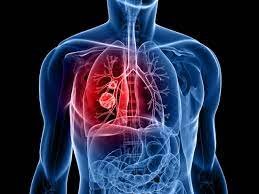Myocardial infarction, commonly referred to as a heart attack, is a serious cardiovascular event where the heart muscle’s blood supply is significantly compromised or completely obstructed. This can result in a spectrum of consequences, ranging from asymptomatic episodes to catastrophic outcomes, including sudden cardiac death. Coronary artery disease, the foremost cause of mortality in the United States, is responsible for the majority of heart attacks. Obstruction of a coronary artery deprives the heart muscle of vital oxygen, potentially leading to cellular necrosis and tissue injury. Typical manifestations include chest discomfort or pressure that may radiate to adjacent areas, such as the neck, jaw, shoulder, or arm, although some individuals may remain symptom-free.

Reference: Anatomy of Heart Attack
Causes and Risk Factors
Coronary artery disease is the primary culprit behind most heart attacks, occurring when one or more coronary arteries become obstructed. This blockage is often caused by cholesterol-rich deposits, known as plaques, which can narrow the arteries and restrict blood flow to the heart. If a plaque ruptures, it can trigger a blood clot, leading to a heart attack. The severity of a heart attack is classified based on electrocardiogram (ECG) results, which may indicate ST elevation, requiring emergency intervention. A complete blockage of a medium or large coronary artery typically results in an ST elevation myocardial infarction (STEMI), while a partial blockage may lead to a non-ST elevation myocardial infarction (NSTEMI). However, some NSTEMI cases may involve total blockage.
Symptoms
- Chest pain or discomfort (feeling of pressure, tightness, or heaviness)
- Shortness of breath (difficulty breathing or feeling winded)
- Cold sweats (breaking out in cold sweats due to reduced blood flow)
- Lightheadedness or dizziness (feeling faint or dizzy)
- Fatigue (feeling extremely tired or weak)
- Pain or discomfort in arms, back, neck, jaw, or stomach (radiating pain)
- Nausea or vomiting
- Rapid or irregular heartbeat
- Anxiety or panic
- Coughing or wheezing
- Pale or clammy skin
- Weakness or numbness in face, arm, or leg
Note: Women may experience different symptoms, such as:
– Less severe chest pain
– shortness of breath
– nausea or vomiting
– fatigue or weakness
– More anxiety or panic
Types of Heart Attack
ST-Elevation Myocardial Infarction (STEMI):
A critical heart attack occurring when a complete blockage of a coronary artery severely damages the heart muscle.
Non-ST-Elevation Myocardial Infarction (NSTEMI):
A heart attack where the coronary artery is partially blocked, causing less damage to the heart muscle.
Silent Myocardial Infarction (SMI):
A heart attack with no noticeable symptoms, often detected during routine medical tests.
Coronary Artery Spasm-Related Myocardial Infarction:
A heart attack triggered by an abrupt and temporary tightening of a coronary artery, drastically cutting off blood supply to the heart muscle.
Spontaneous Coronary Artery Dissection (SCAD)-Related Myocardial Infarction:
A heart attack resulting from a tear in the coronary artery wall, blocking blood flow to the heart muscle.
Myocardial Infarction with Non-Obstructive Coronary Arteries:
A heart attack without significant blockage in the coronary arteries, often caused by other factors like coronary artery spasm or microvascular dysfunction.
Reference: Different Types
Diagnosis and Tests
To diagnose a heart attack, doctors use a combination of:
- Medical History: They ask questions about symptoms, medical conditions, and lifestyle habits.
- Physical Exam: They perform a thorough examination to look for signs of heart attack.
- Electrocardiogram (ECG or EKG): They use an ECG to measure the heart’s electrical activity and detect any abnormalities.
- Blood Tests: They order blood tests to check for cardiac biomarkers, such as troponin, which indicate heart muscle damage.
- Imaging Tests: They may use imaging tests like echocardiograms, coronary angiograms, or cardiac MRIs to visualize the heart and its blood vessels.
- Stress Test: They may perform a stress test to assess the heart’s function under physical stress.
Doctors actively use these tests to diagnose heart attacks and determine the best course of treatment.

Reference: Diagnosis of Heart Attack
Treatment and Management
Treatment for a heart assault regularly includes a combination of medicines, strategies, and way of life changes. Drugs such as ibuprofen, beta blockers, and nitroglycerin are commonly utilized to diminish blood clotting, moderate the heart rate, and make strides blood stream. In a few cases, clot-busting drugs like thrombolytics may be managed to break up blockages. Strategies like angioplasty and stenting can offer assistance reestablish blood stream to the heart, whereas coronary course bypass uniting (CABG) may be fundamental for more extreme blockages. Way of life changes, counting stopping smoking, working out frequently, and receiving a heart-healthy slim down, play a vital part in overseeing heart wellbeing and anticipating future attacks.
Complications and Long-term Effects
Surviving a heart assault can lead to different complications and long-term impacts, including:
- Heart disappointment: Diminished heart work can lead to weakness, swelling, and breathing difficulties.
- Arrhythmias: Unusual heart rhythms can increment the chance of encourage complications.
- Cardiac capture: A sudden misfortune of heart work can be life-threatening.
- Valve issues: Heart assault harm can lead to valve issues, influencing blood flow.
- Cardiac burst: A tear in the heart’s divider can be lethal if cleared out untreated.
- Inveterate chest torment: Repeating torment can affect quality of life.
- Sadness and uneasiness: Passionate toll of heart assault survival.
- Expanded hazard of future heart assaults: Progressing administration is crucial.
Prevention and Reduction of Risk
Anticipating heart assaults requires a multifaceted approach. Firstly, keeping up a solid way of life is vital, as standard work out and a adjusted count calories can altogether diminish the hazard of heart infection. Moreover, stopping smoking and constraining liquor utilization can moreover relieve the hazard of heart assaults. Moreover, overseeing stretch through strategies like contemplation and profound breathing can offer assistance lower blood weight and cholesterol levels. In addition, getting satisfactory rest and keeping up a solid weight are moreover basic for heart wellbeing. It is too critical to oversee basic therapeutic conditions, such as tall blood weight, diabetes, and tall cholesterol, through medicine and way of life changes. By taking these proactive steps, people can altogether diminish their chance of heart assaults and advance generally cardiovascular well-being.

Reference: First Aid for Heart Attack
Myocardial localized necrosis is a genuine and possibly life-threatening condition that requires provoke therapeutic consideration. By understanding the causes, indications, conclusion, treatment, and anticipation procedures, people can take proactive steps to diminish their hazard and advance heart wellbeing. It is vital to recognize the caution signs and act quickly, as opportune mediation can essentially make strides results. In addition, receiving a sound way of life, overseeing fundamental conditions, and remaining educated can enable people to take control of their cardiovascular well-being. Eventually, a comprehensive approach to heart wellbeing can offer assistance relieve the affect of myocardial localized necrosis and spare lives.





